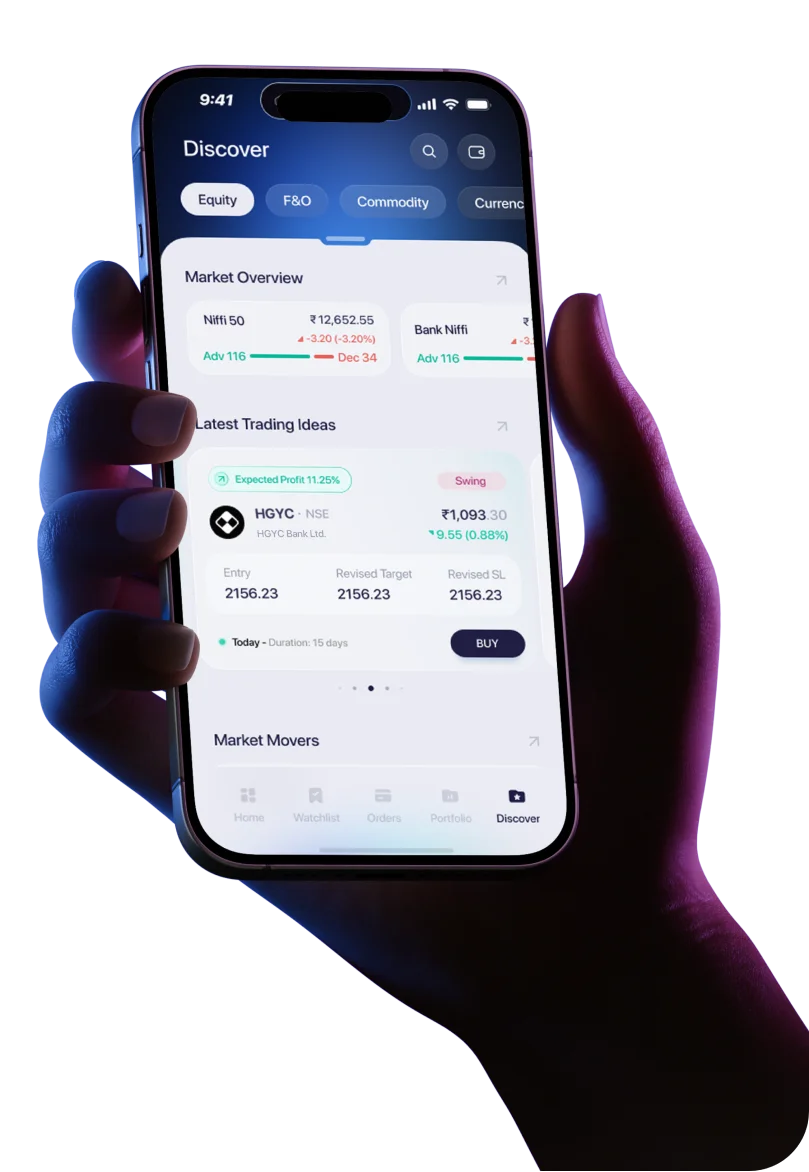Options trading in India has seen tremendous growth in recent years, with more retail and institutional participants entering the derivatives market. With instruments like Nifty and Bank Nifty options seeing lakhs of contracts traded daily, understanding how to price these instruments accurately is crucial for successful trading.
A common dilemma faced by traders is determining whether an option is fairly priced. The option premium quoted on the screen is influenced by multiple factors, market sentiment, demand-supply, volatility, and news, but is that premium justified?
This is where an Options Fair Value Calculator plays a pivotal role. It acts as a scientific lens through which a trader can assess whether an option is overpriced, underpriced, or fairly valued, and make smarter trading decisions accordingly. In this article, we’ll explore everything about options fair value, how it is calculated, and how tools like Samco’s Option Fair Value Calculator can help streamline this critical aspect of options trading.
1 : What is Options Fair Value?
In the context of options, Fair Value refers to the theoretical price of an option, derived using mathematical models like Black-Scholes or Binomial models. It is not what the option is currently trading at on the market, but rather what it should be trading at, based on a set of input assumptions.
An option's fair value includes two key components:
- Intrinsic Value (the immediate value if exercised now)
- Time Value (the premium paid for the potential of future profits)
If an option’s market price is significantly higher than its fair value, it could be overpriced, and vice versa.
Understanding fair value helps traders avoid common pitfalls like overpaying for options with inflated premiums or exiting too early on mispriced contracts. This distinction is especially important in volatile environments where prices move fast but may not always reflect the option’s true worth.
Fair value is a guidepost, helping traders make data-driven decisions instead of relying purely on instinct or market noise.
2: What is an Options Fair Value Calculator?
An Options Fair Value Calculator, also known as an options pricing calculator or options premium calculator, is a digital tool that helps traders compute the theoretical price of an option contract.
Instead of manually crunching numbers using complex formulas, the calculator allows traders to input a few key data points—like spot price, strike price, volatility, expiry, and interest rates- and instantly see the fair value of a Call or Put option.
These calculators rely primarily on the Black-Scholes Model, which is a globally recognized mathematical formula used to value European-style options (which are used in Indian stock markets). It uses market variables to arrive at a precise and model-backed valuation.
Such calculators are available on many advanced trading platforms, including Samco’s Option Fair Value Calculator, and can be accessed online or via mobile apps. They are especially useful for intraday and positional traders who need quick, data-backed decisions in dynamic markets.
By using an options valuation calculator, traders can assess whether the premium they see in the market aligns with fair value, helping avoid emotional decisions and spot mispricing opportunities quickly.
3 : How Does It Work? Inputs Used
The Options Fair Value Calculator requires certain market inputs to function. Here’s a breakdown of each:
Spot Price (Underlying Price)
This is the current market price of the underlying asset (e.g., Nifty, Bank Nifty, or a stock like Reliance). It forms the base for calculating the intrinsic value.
Strike Price
This is the fixed price at which the holder of the option can buy (Call) or sell (Put) the underlying. The relationship between spot and strike defines whether the option is in-the-money (ITM), at-the-money (ATM), or out-of-the-money (OTM).
Time to Expiry
Options lose value as expiry approaches due to time decay (Theta). The calculator factors in the number of days left until expiry to compute the fair value accordingly.
Risk-Free Interest Rate
In India, this is usually the yield on 91-day Treasury Bills (~6.7% as of 2024). It reflects the opportunity cost of capital and affects the time value component.
Implied Volatility (IV)
A key factor. IV reflects the market's expectation of future volatility. Higher IV generally inflates option premiums. The calculator adjusts fair value significantly based on IV input.
Dividends (if applicable)
For stock options, expected dividends reduce the fair value of Call options and increase the value of Put options. Index options like Nifty and Bank Nifty don’t have dividend adjustments.
The Black-Scholes Model (Simplified)
The Black-Scholes formula estimates fair value using:
- Price of the underlying asset
- Strike price
- Time to expiration
- Risk-free rate
- Volatility
It assumes a lognormal distribution of prices and no early exercise (which suits European options in India). While exact math is complex, calculators automate this behind the scenes.
Illustrative Table
Input | Case 1 | Case 2 | Case 3 |
|---|---|---|---|
Spot Price | ₹18,000 | ₹18,000 | ₹18,000 |
Strike Price | ₹18,200 | ₹18,000 | ₹17,800 |
Days to Expiry | 7 | 7 | 7 |
IV | 15% | 20% | 25% |
Risk-Free Rate | 6.7% | 6.7% | 6.7% |
Fair Value (Call Option) | ₹45 | ₹55 | ₹68 |
As IV increases, the fair value rises, showing how key these variables are in determining real-time value.
4 : Why Is Calculating Fair Value Important?
Determining fair value helps traders make rational, data-backed decisions in a high-stakes market. Here's why it’s indispensable:
- Prevents Overpaying: Traders can avoid buying inflated options in euphoric or high-IV environments.
- Better Entries & Exits: Aligning trades with fair value leads to optimized timing, especially in spreads or straddles.
- Identifies Mispricing: Disparities between market price and fair value offer arbitrage or mean-reversion opportunities.
- Risk Management: Helps set more accurate stop-loss and profit targets.
- Strategy Validation: Especially for multi-leg strategies like bull call spreads or iron condors, ensuring fair pricing is critical.
In fast-moving markets like India’s Nifty and Bank Nifty derivatives space, being able to quickly judge whether a premium is reasonable can be the difference between profit and loss.
5 : Fair Value vs Market Value of an Option
Market value is the price you see on the trading terminal, driven by supply and demand, news flow, sentiment, and liquidity.
Fair value is the model-based theoretical price, calculated using parameters like IV, expiry, and rates.
Premiums often deviate from fair value due to:
- News events (budget, RBI policy, global cues)
- Sudden spikes in implied volatility
- Liquidity crunch or aggressive short covering
When market value > fair value → possible overpricing
When market value < fair value → possible undervaluation
Traders can use this difference to time entries, initiate mean-reverting trades, or avoid overpriced contracts.
6 : Example Calculation
Let’s say:
- Spot Nifty = ₹18,000
- Strike Price = ₹18,200
- IV = 20%
- Time to Expiry = 5 days
- Risk-Free Rate = 6.7%
Using a Black-Scholes-based calculator, the fair value of a Nifty 18,200 Call option might be ₹48.
But suppose the market is quoting this option at ₹65 due to aggressive demand. That ₹17 difference indicates overpricing. A trader may:
- Avoid buying
- Initiate a short call if the strategy aligns
- Use it as a hedge leg in spreads
Manual calculation would require solving the Black-Scholes formula, which is time-consuming and error-prone. The calculator provides instant, accurate valuation.
7 : Advantages of Using a Fair Value Calculator
- Accuracy: Removes guesswork and human error.
- Speed: Instant computation during volatile markets.
- Objectivity: Helps maintain discipline and avoid emotional trades.
- Efficiency: Saves time, especially for multi-leg or intraday strategies.
- Adaptability: Can be used for various strategies (spreads, straddles, hedges).
Overall, a fair value calculator becomes a vital decision-support tool for both beginners and advanced traders alike.
8 : Using Samco’s Trading Tools
Samco Securities offers a suite of tools to empower option traders, including an Options Pricing Calculator integrated into its trading platform and available via the web.
With Samco’s calculator, traders can:
- Enter key inputs like strike, spot, IV, and expiry
- Get instant fair value for Calls and Puts
- Compare it with live market premiums
- Decide whether to buy/sell/avoid the trade
➡️ Try Samco's Options Calculator Here
➡️ Open a Samco Account to access all tools and start trading with precision
The platform also provides access to:
- Option Greeks
- Strategy builders
- Option chain with IV analysis
These tools make options valuation intuitive and professional, ideal for traders seeking an edge.
9: Common Myths or Mistakes in Options Valuation
- Myth 1: “High Premium = Bad Option”
Not true. A high premium may simply reflect high IV or deep ITM positioning. - Myth 2: Ignoring IV
Many traders overlook implied volatility, which significantly impacts premium. Always factor it in. - Myth 3: Misjudging Time Decay
Theta erosion near expiry can drastically affect option price. Relying solely on spot movement is misleading. - Mistake: Blindly Trusting Market Price
Market noise can distort the price. Always check against fair value to avoid overpaying or underselling.10 : Conclusion & Call to Action
Understanding the fair value of options is a foundational skill for any serious trader. It helps navigate volatility, avoid emotional trades, and optimize entries and exits. Using an Options Fair Value Calculator, like the one offered by Samco Securities, can make this process effortless, accurate, and actionable.
Don’t rely solely on market prices—back your trades with data. Whether you’re trading Nifty, Bank Nifty, or stock options, a fair value calculator is your edge in the fast-paced world of derivatives.
- Try Samco’s Option Premium Calculator
- Open a Free Demat Account with Samco and get access to all tools today!



 Easy & quick
Easy & quick
Leave A Comment?